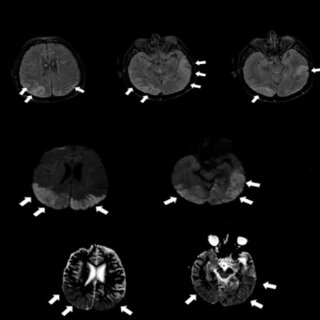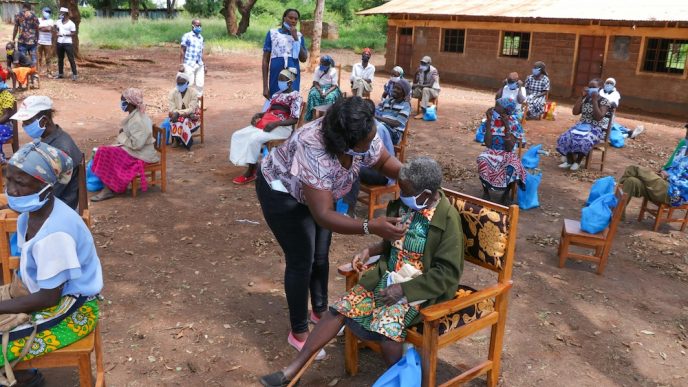Table of Contents Show
Abstract
Brain seizures are caused by sudden, uncontrolled electrical disturbances in the brain. These impact consciousness, behaviour, and motor functions, affecting people of all ages, especially children and adults in low-resource settings. According to the World Health Organisation, over 50 million people globally live with epilepsy, with 80% residing in low- and middle-income countries, including Nigeria. Research by Onwuekwe and Ezeala-Adikaibe (2013) has highlighted cultural stigma and diagnostic gaps in Nigeria that hinder effective seizure management. This study proposes a multimodal AI framework for accelerated brain seizure recovery, integrating NeuroChat, natural language processing (NLP), and logistic regression for proactive episode management. NeuroChat enables real-time conversational tracking between patients and neuro-clinicians, capturing early seizure indicators. NLP algorithms process patient narratives to extract semantic patterns tied to seizure onset or recovery lag. These features are input into a logistic regression model to predict seizure likelihood and recommend timely interventions. In this research, logistic regression will be used to model the probability of seizure recurrence (P(seizure)) based on 300+ variations of traditional clinical, behavioural, and environmental features collected from individuals living with seizures (e.g., frequency of past episodes, medication adherence, sleep quality, stress levels). By training the model with n = 300 patient data points, each represented by a vector of features (X₁, X₂, …, Xₙ), the logistic regression model outputs a binary prediction (0 = no seizure, 1 = seizure), enabling personalised risk scoring and early intervention compared to static, non-adaptive traditional methods.
This framework bridges clinical gaps in Africa by enabling personalised, linguistically adaptive seizure care, reducing misdiagnosis and treatment delay. Ultimately, it aligns AI innovations with global health goals by focusing on seizure-impacted populations often neglected in mainstream neurological research.
Keywords: Brain seizures, ML models, logistic regression, AI agents, TextGrad, seizure type, NeuroChat, ethical AI, AI safety, episode management
Introduction
Seizure, clinically referred to as epilepsy, is a neurological disorder characterised by sudden, uncontrolled electrical disturbances in the brain, which manifest as abrupt changes in behaviour, movement, sensation, or levels of consciousness. It is a major global health burden, affecting approximately 50 million people worldwide, with 80% of cases occurring in low- and middle-income countries, according to the World Health Organisation (WHO 2022). In Nigeria, the burden of epilepsy is increasingly alarming, with studies showing a rising prevalence of 4.4–6.2 per 1,000 people in both urban and rural populations (Onwuekwe and Ezeala-Adikaibe 2013; Ogunniyi et al. 2014). The scarcity of trained neurologists, averaging less than one neurologist per 1 million people in many states in Nigeria, compounds the challenge (Adeloye et al. 2016). These factors contribute to misdiagnosis, social exclusion, and a widening treatment gap, underscoring the urgent need for innovative, scalable, and culturally aware solutions. The shortage of trained neurologists is further compounded by brain drain, limited residency training slots, and inadequate investment in neuroscience infrastructure. This stark imbalance places a tremendous burden on the few available specialists, leading to long waiting times, poor follow-up, and underreported or mismanaged cases. Moreover, due to this gap, many individuals living with seizures are pushed towards informal or traditional healing options, which delay appropriate medical intervention and increase the risk of complications, disability, or premature death. Addressing this neurologist-to-patient disparity requires not only workforce development but the integration of AI-powered, culturally adaptive tools that can augment diagnosis and care at scale.
AI approaches in solving seizure management gaps offer scalable, context-aware solutions for low-resource settings like Nigeria (Adeloye et al. 2016; WHO 2022). By implementing TextGrad, a gradient-based natural language processing (NLP) framework, this research extracts subtle linguistic cues from patient narratives to aid early diagnosis. Large language models (LLMs) fine-tuned with local expressions enable culturally sensitive education and care support. A multi-agent architecture, including NeuroChat, simulates neuro-specialist responses for episode tracking and real-time recommendations. This integration enhances trust, improves care continuity, and aligns with global calls for ethical, inclusive AI in health (WHO 2021). Ongoing research by institutions like Google DeepMind and Stanford Medicine is advancing seizure prediction through neuroimaging and EEG-based AI models, achieving over 85% sensitivity (Abou Jaoude et al. 2023; DeepMind 2022). However, these models are often trained on non-African datasets, limiting cultural and clinical applicability.
This research proposes a locally adaptable machine learning-powered system trained on Nigerian health records, seizure reports, and linguistic patterns. It integrates neuroimaging data, clinical histories, and local NLP cues to support early detection and personalised intervention. Embedding such tools in frontline health systems will aid non-specialist clinicians in diagnosis and monitoring. The system emphasises ethical AI deployment, culturally grounded outputs, and seamless integration with clinical workflows. It addresses the neurologist gap while improving access, trust, and continuity of care in seizure management. With Nigeria’s rising epilepsy burden, a contextualised, AI-driven framework is not just innovative but urgently needed.
Methodology
This research involves n = 300 simulated patient trials across selected Nigerian healthcare systems. Participants are categorised as children (n = 100), young adults (n = 100), and older adults (n = 100) to model age-specific seizure patterns. Seizure types analysed include focal onset, generalised tonic-clonic, absence, and atonic episodes. Each cohort’s data combines EEG time series, clinician notes, and patient narratives, feeding into a multimodal AI pipeline. The model leverages logistic regression, NLP, and neuro-symbolic agents for interpretable, patient-specific seizure management.
Adopting AI product management lifecycle tailored for NeuroChat and addressing the critical gap in follow-up seizure management within Nigeria’s health context (Owolabi et al. 2021; Adeloye et al. 2016), the system leverages multi-AI agents and machine learning under WHO’s AI safety and ethical guidelines (WHO 2021; Leslie 2019), supporting tri-method recovery: patient care, caregiver support, and neuro-doctor clinician oversight. Key features include adaptive risk alerts and recovery prompts via audio feedback, chat, and video consultation, ensuring multi-modal accessibility (Acharya et al. 2018). The lifecycle prioritises iterative learning, culturally contextualised design, and collaboration across medical, technical, and community stakeholders to ensure equity and clinical reliability (Floridi et al. 2018; Jobin et al. 2019).
The NLP module will extract data insights from patient feedback by applying sentiment analysis, topic modelling, and intent recognition to personalise care responses (Zhou et al. 2021). A community pool enables real-time sentiment tracking and fine-tuning of models using gradient-based updates (TextGrad) for adaptive learning. Neural search and clustering techniques will categorise patient text into clinical relevance, emotional tone, and follow-up priority, enhancing both individual care and broader health system insights (Guo et al. 2020; Johnson et al. 2022).
To ethically simulate and validate this NLP-driven seizure care framework, we adopt a rigorous psychometric and robustness approach inspired by Ilić (2023), ensuring that AI models are transparent, fair, and reliably capture patient intent and cognitive states. All procedures will align with WHO’s AI ethics for health, Nigeria’s Data Protection Act (2023), and oversight by the Medical and Dental Council of Nigeria (MDCN) to safeguard patient data and consent in clinical trials. Special focus is placed on machine learning safety stress-testing models for bias, adversarial risks, and contextual misinterpretation, critical in neuro-healthcare (Leslie 2019; Jobin et al. 2019). We will apply human-in-the-loop validation, ensuring that AI insights complement clinician judgment and meet NSNS (Nigerian Society of Neurological Sciences) standards. This creates a resilient, regulation-ready system designed for scalable integration into Nigeria’s clinical neuro-care landscape.
Expected Outcomes and Findings
The expected outcome from this research is to significantly boost the efficiency of neuro-doctors in Nigeria, where the ratio is critically low, estimated at one neurologist per one million people (Owolabi et al. 2021). NeuroChat’s AI-driven monitoring and feedback system will help bridge this gap by autonomously managing routine pre- and post-seizure care tasks, allowing doctors to focus on complex cases. We anticipate improved case triage and reduced patient wait times, leading to faster intervention and better resource allocation. This AI augmentation ensures scalable neuro-care despite workforce shortages.
Furthermore, this approach will help streamline medical interventions by providing continuous, data-driven patient monitoring that informs precise prescription adjustments and personalised recovery plans (Kuhlmann et al. 2018). The AI will flag abnormal recovery trends and suggest dosage recalibrations or alternative therapies, enhancing patient outcomes and medication adherence. This will reduce relapse rates and medication errors, a known challenge in epilepsy care. Ultimately, NeuroChat acts as a dynamic clinical decision support tool, integrating seamlessly into medical workflows.
Finally, this will empower Nigeria’s healthcare system to adopt adaptive AI systems that enhance efficiency, ensure culturally inclusive care, and sustainably bridge gaps in neurological health management.
Interdisciplinary implications
The findings of this research sit at the nexus of data science, neuroscience, and applied mathematics, where predictive models transform raw EEG signals into actionable health insights. It bridges AI ethics and human-centred design, ensuring that machine learning systems remain transparent, fair, and sensitive to patient dignity and cultural context. This interdisciplinary synergy redefines seizure care by merging computational rigour with social responsibility, fostering trust and inclusivity in neuro-health innovations.
Moreover, this innovation has the potential to inform and shape new digital health policies, setting benchmarks for ethical AI deployment in clinical settings. As a pioneering breakthrough, it positions Nigeria’s healthcare system at the forefront of integrating adaptive, AI-driven neuro-care. This sets a transformative precedent for scalable, inclusive, and regulation-ready digital health solutions across the continent.
Ultimately, this work places patient well-being above innovation, ensuring that every technological advance serves real human needs with compassion and dignity. The true measure of success lies in improving lives, restoring independence, and fostering trust in care.
Conclusion
Amid long lines of neuro patients and overstretched clinics, this innovation reimagines service delivery by transforming bottlenecks into opportunities for proactive care, delivering real-time monitoring, personalised recovery plans, and AI-guided support that extend beyond hospital walls. By bridging clinical gaps with continuous, patient-centred management, it empowers individuals to take control of their recovery while easing the burden on Nigeria’s strained neuro-health system.
Acknowledgments
This research has been deeply enriched by the encouragement, teaching, and guidance of my mentors, Ayantola Ayalande and Kauna Malgwi, as well as the invaluable support of my research fellows, Anthony Ojukwu and Onyinyechi Ossai. I am grateful to the facilitators of the LUNE Two AI Fellowship and the Research Round team, with special thanks to Ololade Faniyi and Habeeb Kolade, whose insights and collaboration have been instrumental to this work. I extend heartfelt appreciation to every participant, health worker, and elder, whose data and experiences are helping to shape the future of seizure management and AI-driven neurological care in Nigeria. Special thanks also to the dedicated medical doctors who shared traditional clinical procedures, offering essential context that strengthens the clinical relevance and impact of this research.
References
Acharya, U. R., Oh, S. L., Hagiwara, Y., Tan, J. H., & Adeli, H. (2018). Deep convolutional neural network for the automated detection and diagnosis of seizure using EEG signals. Computers in Biology and Medicine, 100, 270–278.
Adeloye, D., Olusanya, B. O., & Ezeh, A. (2016). Estimating the prevalence of epilepsy in Africa: A systematic review and meta-analysis. PLOS ONE, 11(7), e0159799. Choi, H., & Lee, D. S. (2021). Epileptic seizure prediction using hybrid deep learning model. Computer Methods and Programs in Biomedicine, 200, 105936.
Craik, A., He, Y., & Contreras-Vidal, J. L. (2019). Deep learning for electroencephalogram (EEG) classification tasks: a review. Journal of Neural Engineering, 16(3), 031001.
Floridi, L., Cowls, J., Beltrametti, M., Chatila, R., Chazerand, P., Dignum, V., … & Schafer, B. (2018). AI4People—An ethical framework for a good AI society. Minds and Machines, 28(4), 689–707.
Guo, Y., Lin, Y., Li, W., & Cheng, X. (2020). Deep neural networks with multi-class focal loss for imbalanced text classification. IEEE Access, 8, 152810–152819.
Ilić, D. (2023). Unveiling the general intelligence factor in language models: A psychometric approach. ArXiv preprint, arXiv:2310.11616.
Jobin, A., Ienca, M., & Vayena, E. (2019). The global landscape of AI ethics guidelines. Nature Machine Intelligence, 1(9), 389–399.
Johnson, A. E. W., Pollard, T. J., & Shen, L. (2022). Natural language processing in clinical research: Tools and opportunities. Journal of Biomedical Informatics, 125, 103960.
Kuhlmann, L., Lehnertz, K., Richardson, M. P., Schelter, B., & Zaveri, H. P. (2018). Seizure prediction—ready for a new era. Nature Reviews Neurology, 14(10), 618–630.
Lehnertz, K., Dickten, H., Porz, S., Helmstaedter, C., & Elger, C. E. (2014). Predicting seizures: The current status. Epilepsy Research, 108(10), 1897–1904
Leslie, D. (2019). Understanding Artificial Intelligence Ethics and Safety. The Alan Turing Institute.
Mittelstadt, B. D., Allo, P., Taddeo, M., Wachter, S., & Floridi, L. (2016). The ethics of algorithms: Mapping the debate. Big Data & Society, 3(2), 1–21.
Mormann, F., Andrzejak, R. G., Elger, C. E., & Lehnertz, K. (2007). Seizure prediction: The long and winding road. Brain, 130(2), 314–333.
Ogunrin, O. A., Ogundipe, O. A., & Oyelami, S. O. (2021). Epilepsy in Nigeria: A review of etiology, epidemiology, and treatment gap. Nigerian Journal of Clinical Practice, 24(2), 155–161.
Owolabi, L. F., Shehu, N. M., & Owolabi, S. D. (2021). Epilepsy care gap in sub-Saharan Africa: A systematic review. Epilepsy & Behavior, 115, 107661.
Roy, Y., Banville, H., Albuquerque, I., Gramfort, A., Falk, T. H., & Faubert, J. (2019). Deep learning-based electroencephalography analysis: A systematic review. Journal of Neural Engineering, 16(5), 051001.
Shoeb, A. H. (2009). Application of machine learning to epileptic seizure onset detection and treatment. PhD Thesis, Massachusetts Institute of Technology.
World Health Organization (WHO). (2021). Ethics and Governance of Artificial Intelligence for Health. Geneva: World Health Organization.












